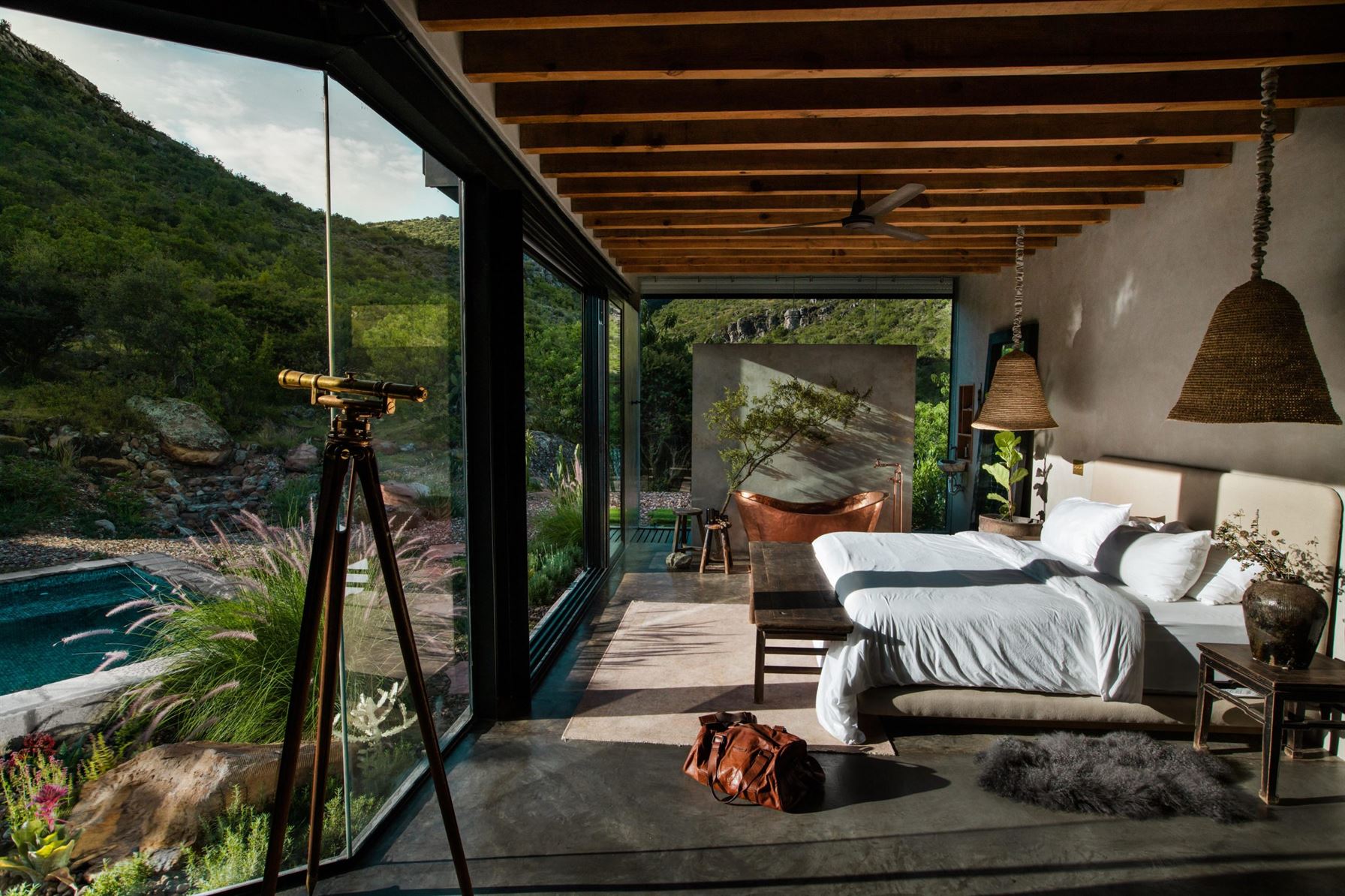
CASA ETÈREA - AN ART EXPERIENCE WITHIN NATURE
Conceived as an off-grid hideaway for two, Casa Etérea is a 75-square-metre dwelling designed by Mexico-based Singaporean writer and designer Prashant Ashoka. The house draws all its power from solar energy; its water supply from collected rainwater; and uses a patterned ultraviolet coating on the mirror making it visible to birds while remaining reflective to the human eye.
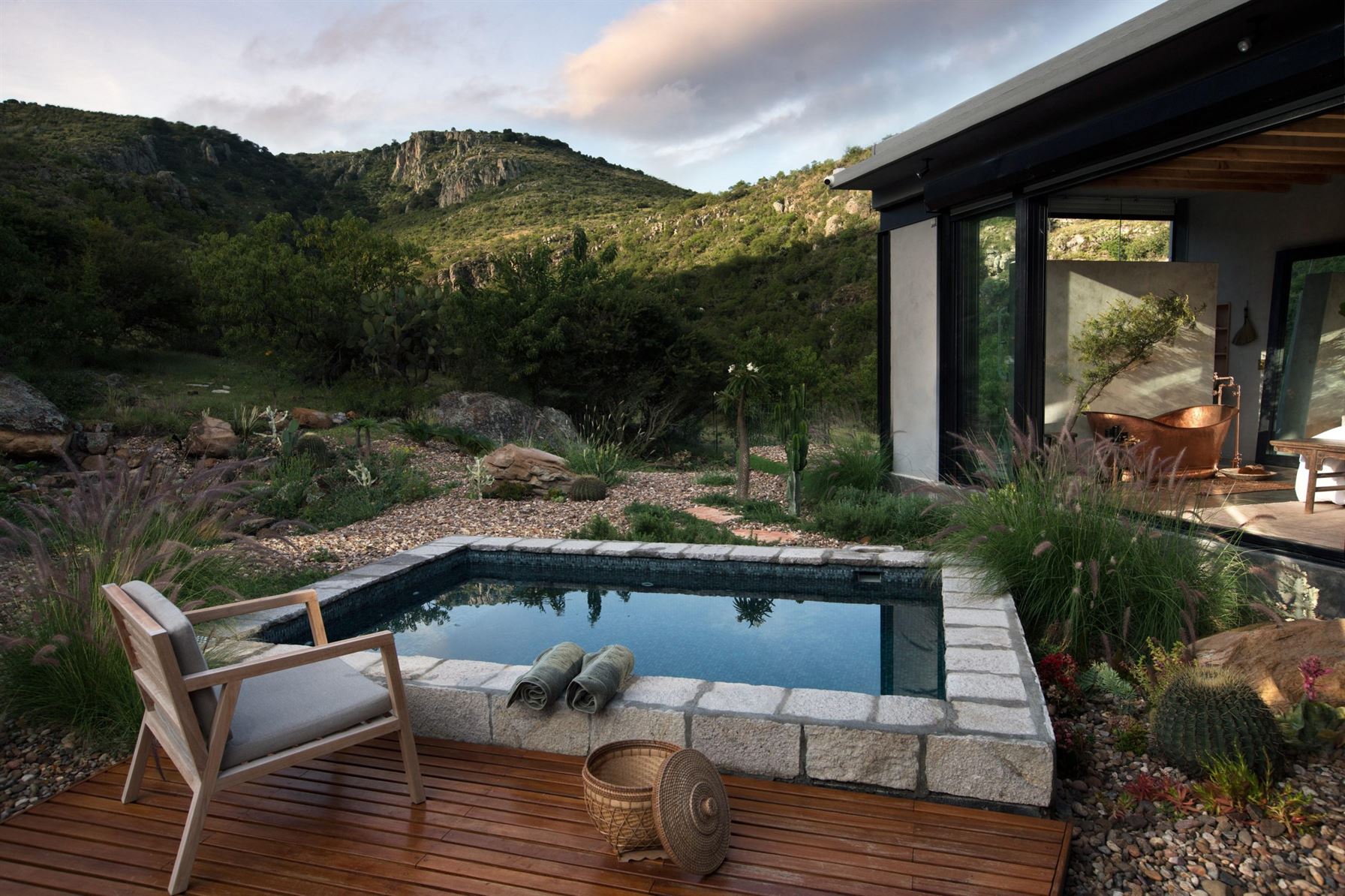 “The vision was to create a theatre to nature”, Ashoka explains, “so sustainability was crucial in achieving a truly complete integration with the environment.” Working from an intention to leave the landscape untouched, the foundation of the house was built entirely from rock collected off the mountain. And by utilizing site orientation, efficient ventilation design, and insulated glass, the house naturally regulates temperature in the semi-arid desert climate of the central Mexican highlands.
“The vision was to create a theatre to nature”, Ashoka explains, “so sustainability was crucial in achieving a truly complete integration with the environment.” Working from an intention to leave the landscape untouched, the foundation of the house was built entirely from rock collected off the mountain. And by utilizing site orientation, efficient ventilation design, and insulated glass, the house naturally regulates temperature in the semi-arid desert climate of the central Mexican highlands.
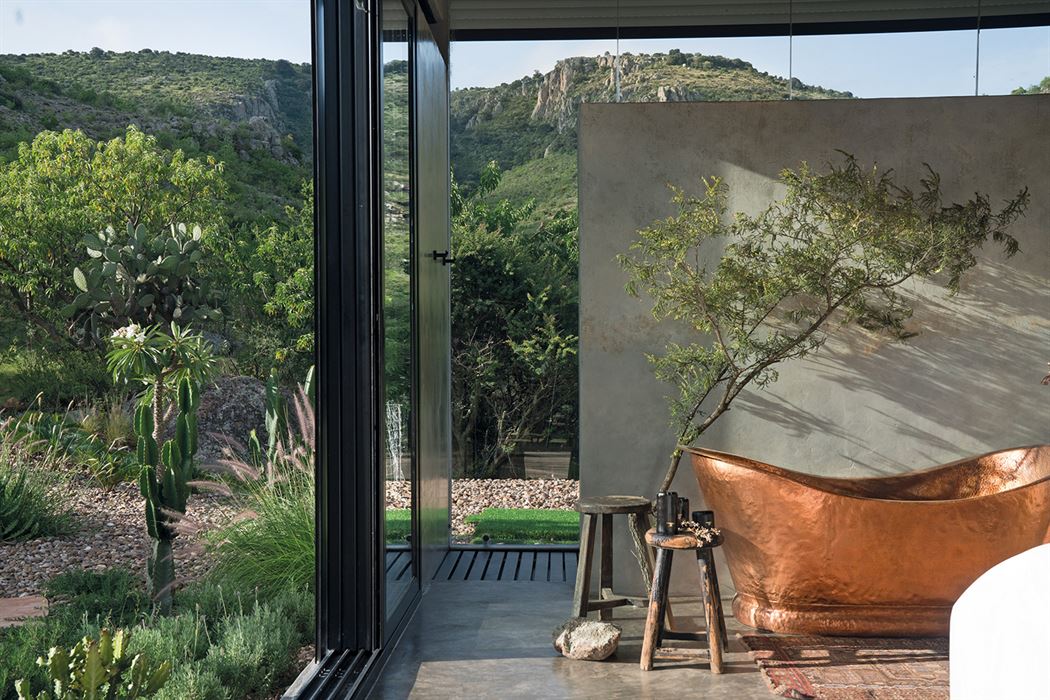 The open-planned concept consists of two rectilinear volumes that merge at a 120-degree V-shaped intersection. From the central living space and bedroom, floor-to-ceiling sliding glass doors open to connect with a decked patio and pool area shaded by olive and pomegranate trees. Behind the intimate kitchen, a rooftop stairway access doubles as a utility room, and remote-controlled outdoor PVC shutters were added to provide security and privacy.
The open-planned concept consists of two rectilinear volumes that merge at a 120-degree V-shaped intersection. From the central living space and bedroom, floor-to-ceiling sliding glass doors open to connect with a decked patio and pool area shaded by olive and pomegranate trees. Behind the intimate kitchen, a rooftop stairway access doubles as a utility room, and remote-controlled outdoor PVC shutters were added to provide security and privacy.
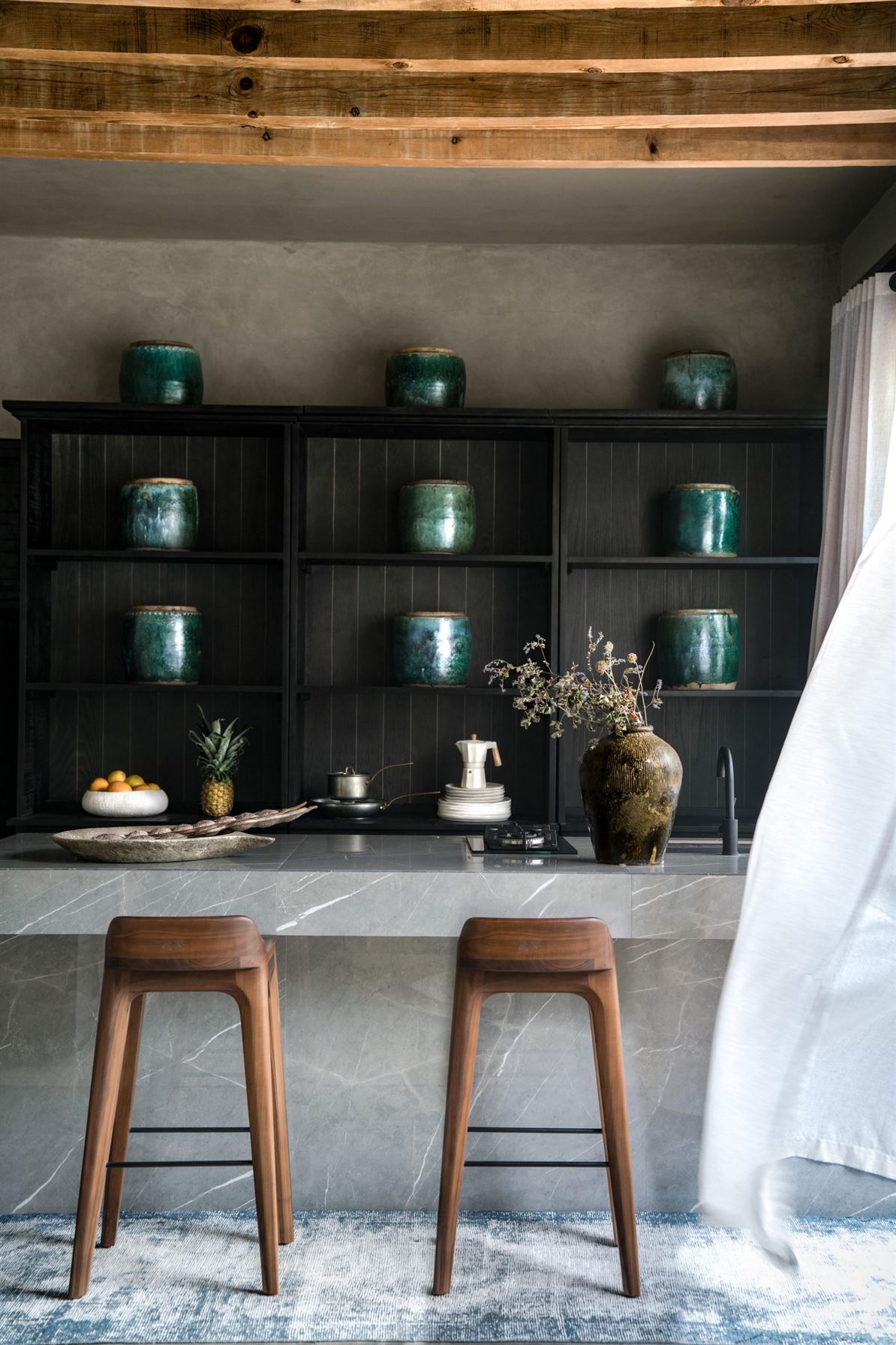 The name ‘Etérea’ translates from Spanish to ‘ethereal’, and suggests a nebulous, otherworldly vision. Both visually and functionally, the project touches on architecture as site-specific installation art and as an extension of the environment.
The name ‘Etérea’ translates from Spanish to ‘ethereal’, and suggests a nebulous, otherworldly vision. Both visually and functionally, the project touches on architecture as site-specific installation art and as an extension of the environment.
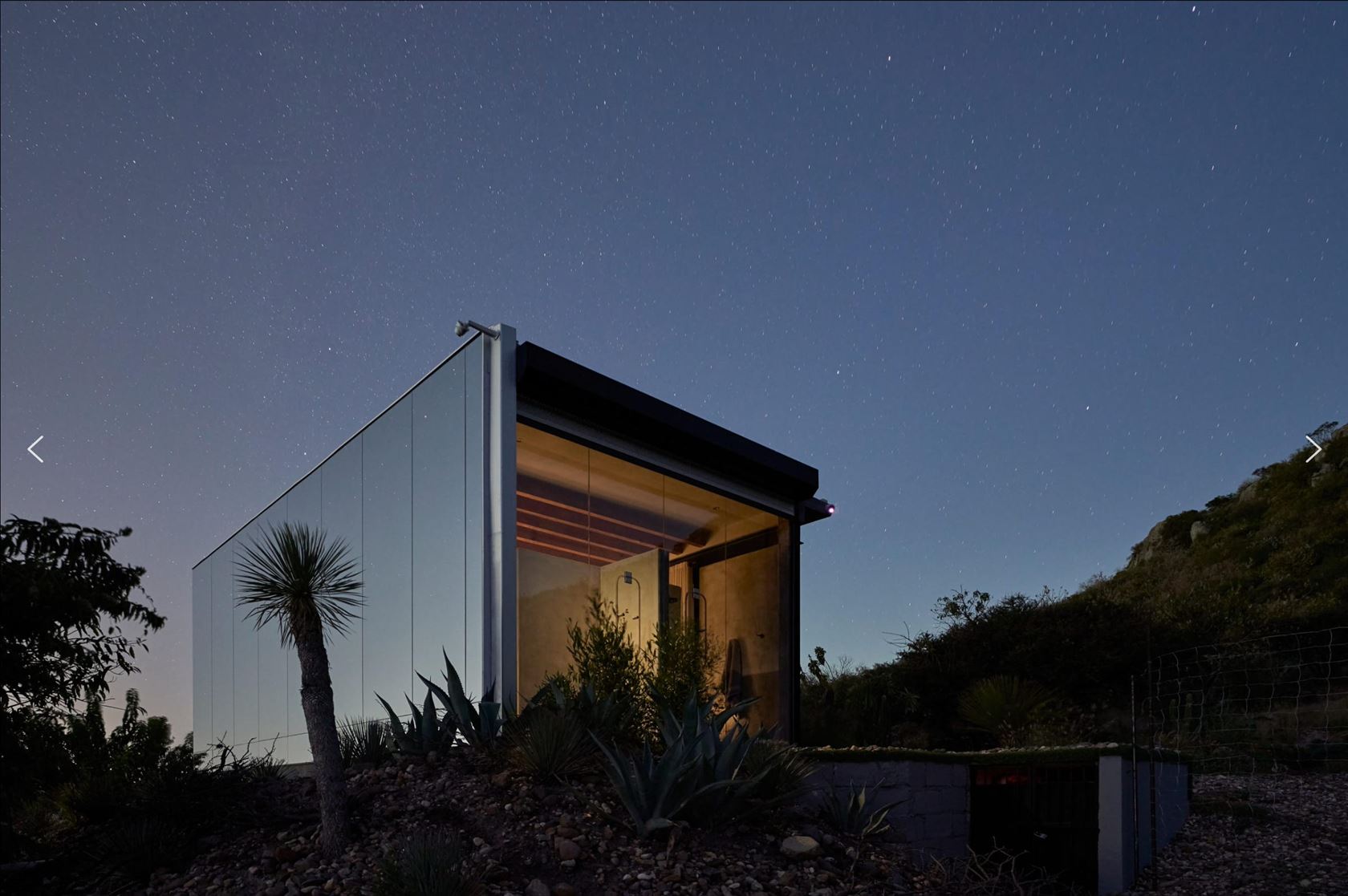 On creating a reciprocal dialogue between the construction and its terrain, Ashoka says: “Light becomes a structural element of this design, distorting the perspective of where the observer begins and the landscape ends. I wanted this interplay of light and scale to evoke a deep sense of awe for the wild, and to beg questions about our role as stewards in the preservation of our ecosystems. These times have made us acutely aware of our interdependence with our environment. And shelters in remote places may afford us a rare stillness and opportunity to bridge the distance between us and the natural world.”
On creating a reciprocal dialogue between the construction and its terrain, Ashoka says: “Light becomes a structural element of this design, distorting the perspective of where the observer begins and the landscape ends. I wanted this interplay of light and scale to evoke a deep sense of awe for the wild, and to beg questions about our role as stewards in the preservation of our ecosystems. These times have made us acutely aware of our interdependence with our environment. And shelters in remote places may afford us a rare stillness and opportunity to bridge the distance between us and the natural world.”
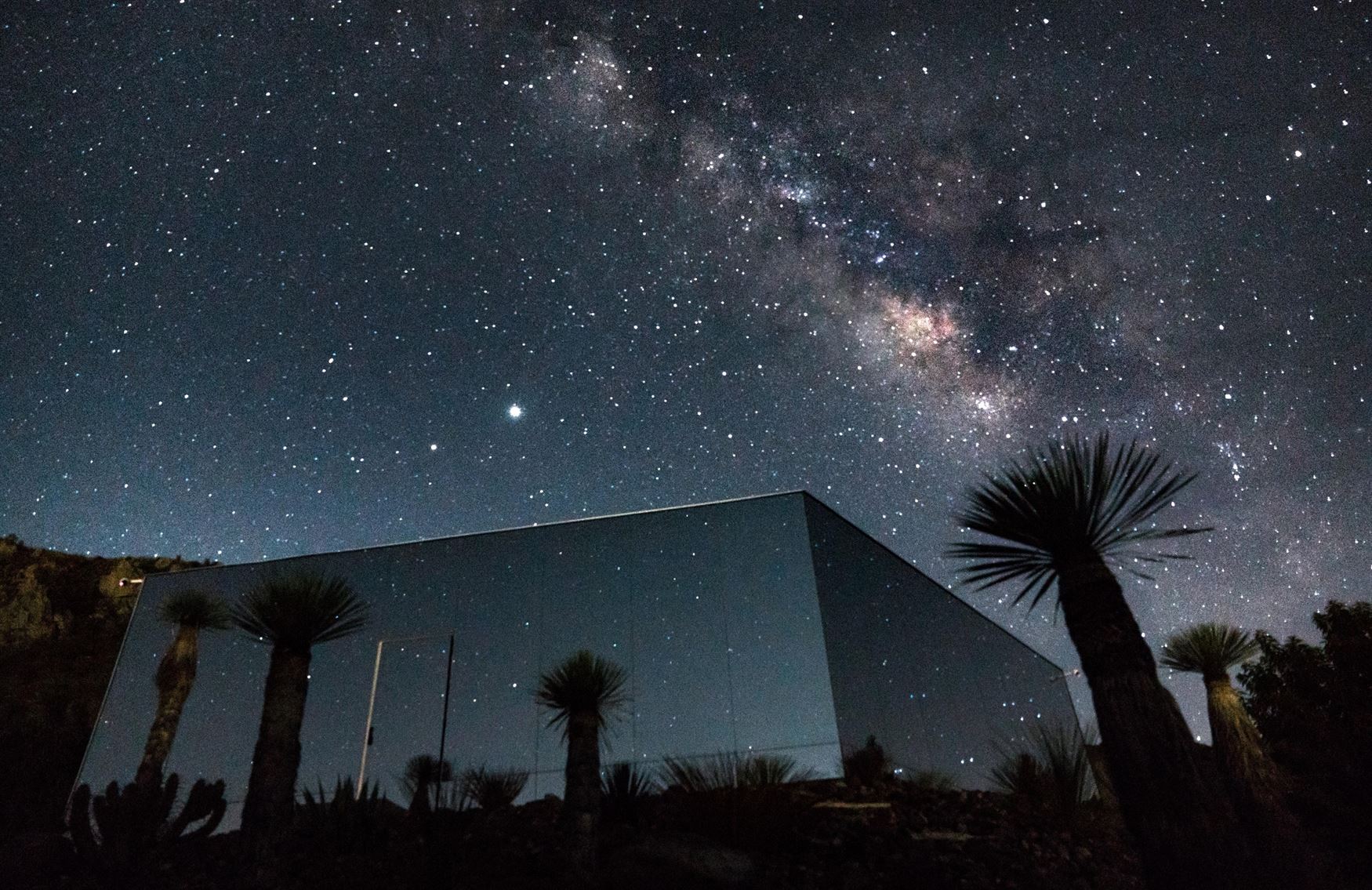





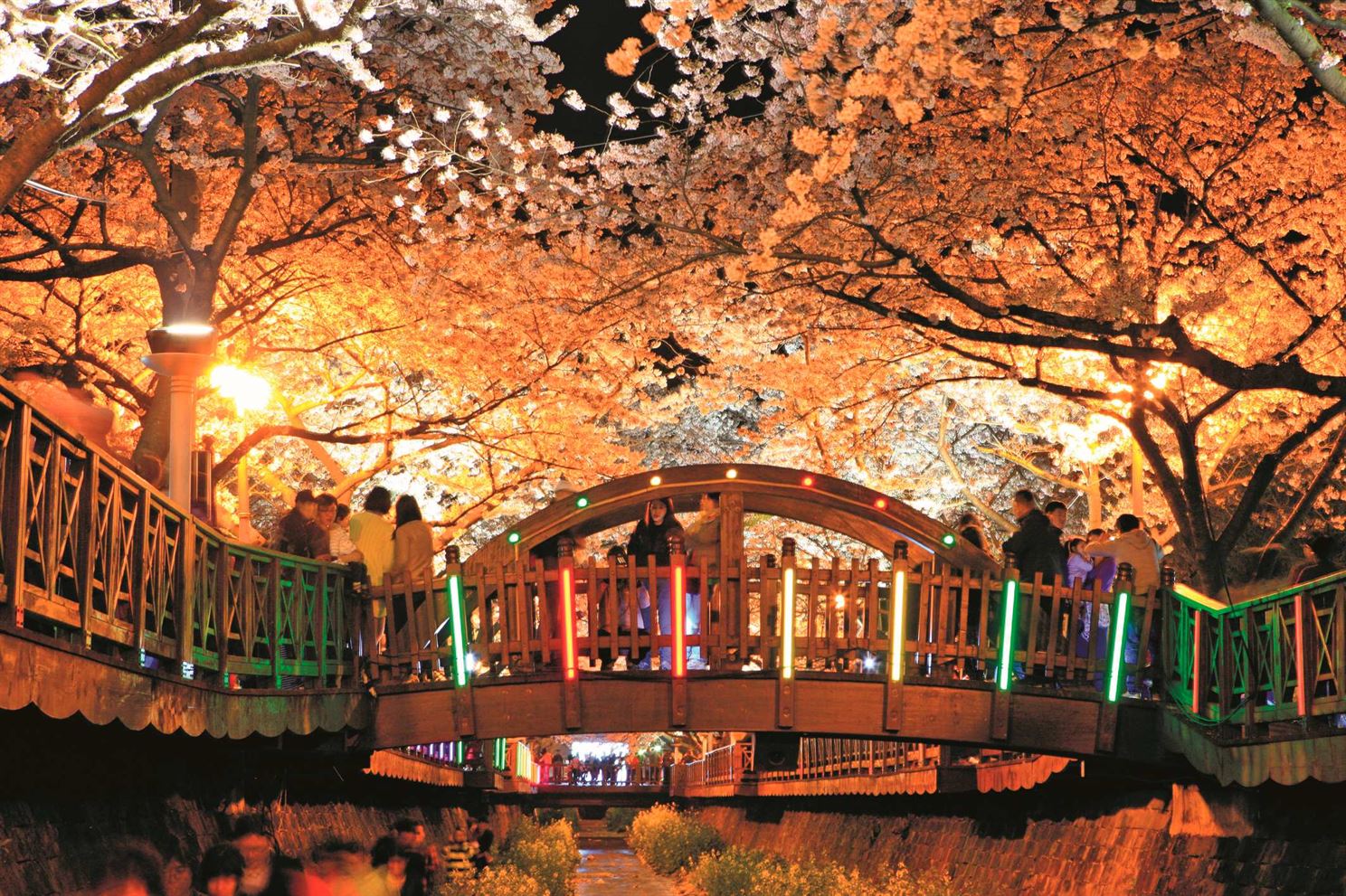

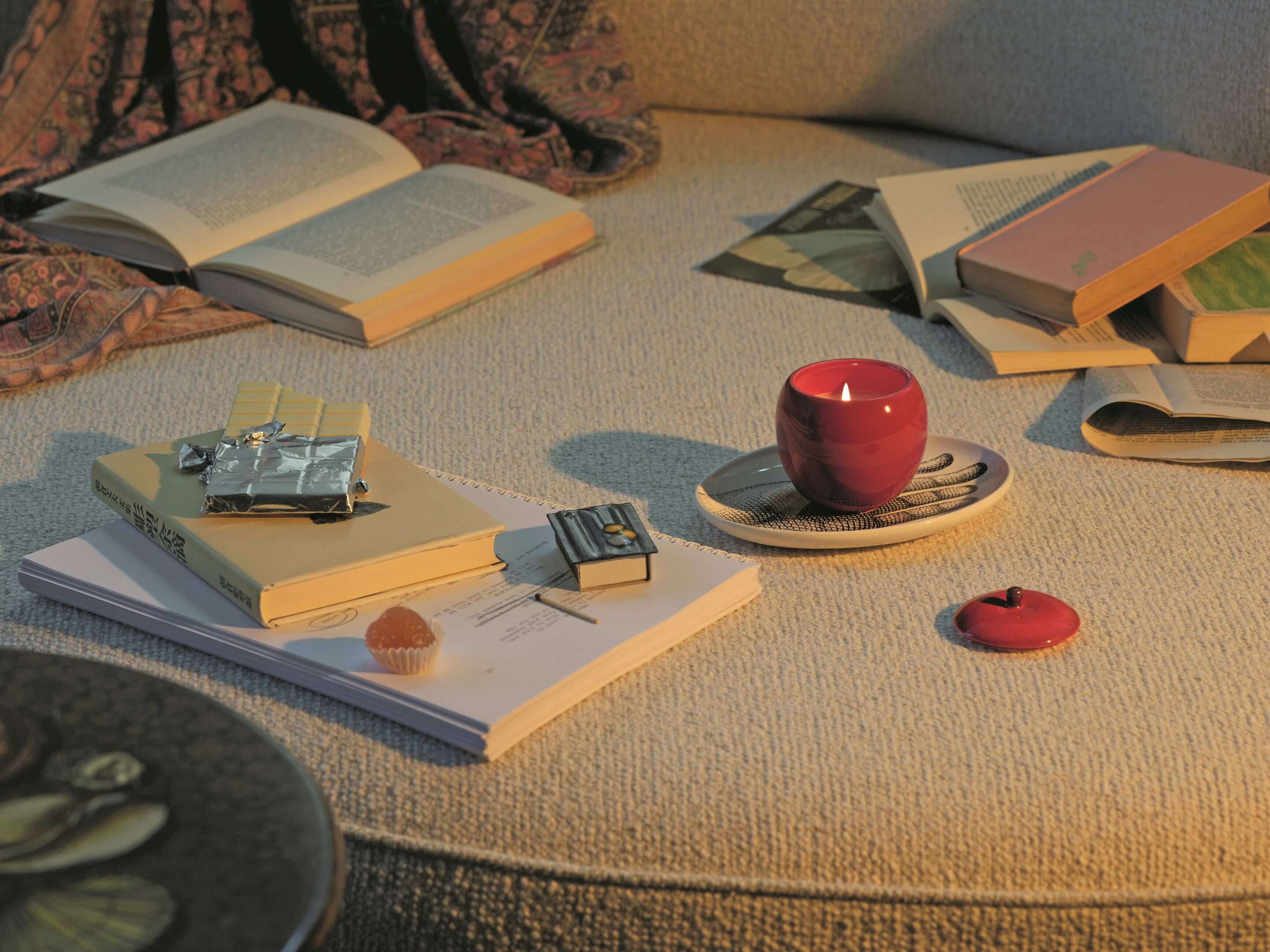

Comments